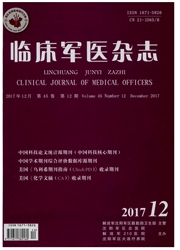

 中文摘要:
中文摘要:
目的探讨聚肌苷酸胞苷酸(polyinosinic polycytidylic acid,PolyI:C)注射C57BL/6小鼠产生的血清学和组织学自身免疫现象。方法50只6周龄雌性C57BL/6小鼠随机分为药物组和对照组,药物组按5 mg/kg剂量注射PolyI:C,对照组注射无菌PBS,每月每组取5只实验小鼠眼眶采血,间接免疫荧光法测定血清抗核抗体(ANA)和抗线粒体抗体(AMA)。同时取小鼠肝脏做HE染色,显微镜观察病理改变。结果PolyI:C组小鼠血清AMA阳性率逐渐增高,第4月达到80%,此后维持不变,对照组只有1例出现AMA弱阳性。PolyI:C组ANA阳性率在第2月达到100%,对照组随着时间的进行也出现ANA阳性,在第4月达到100%;HE染色发现药物组小鼠肝脏汇管区及部分血管周围均出现不同程度的炎细胞浸润。结论PolyI:C注射C57小鼠可以刺激机体产生自身抗体ANA,AMA,并引起肝脏炎细胞浸润,产生自身免疫样病变,有发生自身免疫性肝病倾向。
 英文摘要:
英文摘要:
Objective To investigate the generation of autoimmune characteristics induced by polyinosinic polycytidylic acid (polyI:C) in C57BL/6 mice. Methods Fifty 6-week-old C57BL female mice were divided into polyI:C group and control group at random. The former were injected with polyI : C ( 5 mg/kg) and the latter with PBS. Antinuclear antibodies (ANA) and antimitochondrial antibodies (AMA) were determined by immunofluorescence assay every month. Livers were cut into small sections and were stained with UI. E. Results The positivity rate of serum AMA in polyl:C group was increased after polyI:C injection. It remained at the level of 80% after the fourth month. Only one mouse' s serum AMA was found in the control group. The positive rate of serum ANA in polyI: C and control group was up to 100% in the second month arid the fourth month. H. E staining results showed lymphocytic infiltrated around the bile ducts and the liver veins in the mice of polyI : C group. Conclusion ANA can be generated in serum of C57BL/6 mice by injecting polyI:C. Lymphocytic infiltration can be detected in mice with polyI:C injection. Autoimmune liver diseases could be caused by using polyI:C in C56BL/6 mice.
 同期刊论文项目
同期刊论文项目
 同项目期刊论文
同项目期刊论文
 期刊信息
期刊信息
